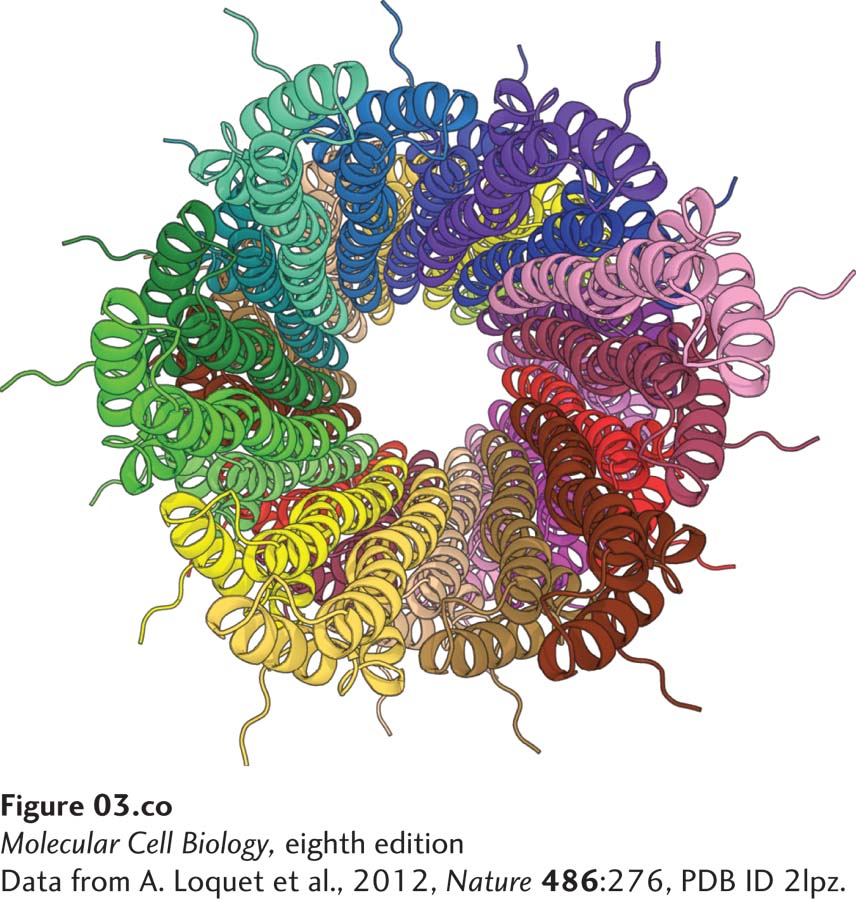
Molecular ribbon model of a protein “needle” used by pathogenic bacteria to inject proteins into human cells to initiate infection. Many disease- causing bacteria, including Salmonella typhimurium (food poisoning) and Yersinia pestis (bubonic plague), use a syringe- like protein complex called a type III secretion system to inject proteins into their mammalian target cells. The structure of the needle portion of the syringe used by Salmonella typhimurium, determined using a combination of nuclear magnetic resonance (NMR), electron microscopy, and computational methods, is a long tube with many α helices (illustrated as coiled ribbons) forming the walls of the needle.
[Data from A. Loquet et al., 2012, Nature 486:276, PDB ID 2lpz.]
[Leave] [Close]